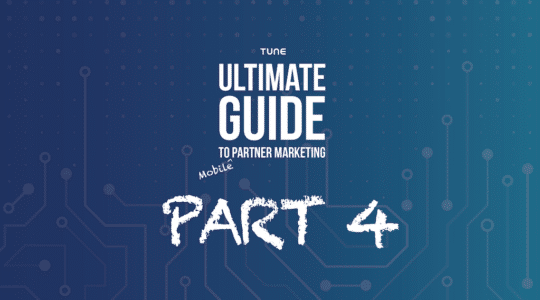
In September 2015, Apple announced that iOS 9 will feature content blocking, allowing users to block ads and giving them more control over the ad experience. Apple’s decision to allow content blocking on iOS 9 acknowledges a significant ongoing shift in how advertisers connect with consumers online, especially in the mobile marketing space.
In early 2016, Google announced the Accelerated Mobile Pages Project with a goal of rendering a way to build web pages for loading static content fast — in fact REALLY fast. And in March 2016, a report TUNE released noted that Mobile ad blocking installs spiked 3X in the last three months.
As traditional ways for ad revenue potentially dry up, new ways like native advertising will continue to emerge as a powerful way for brands to connect with consumers. Native advertising is a form of paid media where the ad experience closely resembles or appears to be highly relevant to the platform on which it appears. It can come in a variety of forms such as online advertorials (which look like editorial content but are required to be marked as sponsored content), online videos, sponsored social media posts, and in-feed ads.
Native Advertising’s Time Has Come
Native advertising is more effective in drawing consumers’ attention than intrusive display ads anyway. A recent study by IPG Media Lab and Sharethrough found that consumers look at native ads 53% more often than they look at traditional display ads. Business Insider predicted that spending on native ads would reach $7.9 billion in 2015 and grow to $21 billion in 2018, rising from just $4.7 billion in 2013.
As content blocking has driven a stake through the heart of banner ads, native advertising is set to take its place.
Native Advertising is Not Content Marketing
Most mobile users will typically see native ads on Facebook and other social media platforms as in-feed or in-stream ad formats. Native advertising also appears in mobile apps and games. It can even be embedded directly within the actual editorial content of a page.
To be effective, a native ad will:
- Provide a good user experience
- Increase sales for publishers
- Help advertisers hit their KPIs
Implicit in all of this is an emphasis on performance.
4 Native Advertising Tips for Mobile Marketers
Tip 1: Pay Attention to Every Aspect of Your Ad
Native advertising should match the unique user experience. Take into consideration everything from the app that you are using to the headline and language of the ad itself.
Native ads are not supposed to look or feel like ads, but should be subtle in tone and should create value for both your business and your users. This can mean providing useful information about your product that directly addresses your consumers’ needs.
Work with your creative team to design an ad that will naturally fit into the design of the platform you are working with.
Tip 2: Follow a Tested Formula
Native ads are content-rich and take careful thought to plan and produce. The editorial process can eat into the efficiency of a performance marketing team.
In order to create a scalable process, create a workable template you can use for your native ads instead of starting over with a new approach each time. That way you can focus on examining performance, optimizing the format that works for you and improving the performance over time.
Tip 3: Keep Testing
Don’t expect to get results from one video or one post. Consumers will need to see your native ads multiple times before they start to pay attention. If your first attempt at native advertising doesn’t achieve the desired results of your campaign, don’t give up.
And, as you keep launching campaigns, be sure to keep testing, learning, and optimizing your campaigns by listening to your data. (By the way, this only works if it’s driven by a strategic plan.)
Tip 4: Take Advantage of Programmatic Advertising to Improve ROI
You or your in-house sales team simply can’t identify all of the digital advertising opportunities that exist right now. So, be sure to take advantage of access to real-time inventory at scale—at a price you can pay—offered by programmatic advertising platforms.
When used effectively, new technologies give advertisers the ability to tap into programmatic demand for native advertising, which in turn will allow you to scale your ad buying and put relevant ads directly in front of your consumers using real-time data.
Author
Becky is the Senior Content Marketing Manager at TUNE. Before TUNE, she handled content strategy and marketing communications at several tech startups in the Bay Area. Becky received her bachelor's degree in English from Wake Forest University. After a decade in San Francisco and Seattle, she has returned home to Charleston, SC, where you can find her strolling through Hampton Park with her pup and enjoying the simple things in life.



One more important point to indicate is with Native Advertising – focus has to be not design of your ad but context. Publisher is thinking about design your focus has to be get into the right context and marrying to your audiences mode
@siddharthpuri:disqus curious what your experience is with native apps in India and Southeast Asia. Also, are you working with the publishers and other advertisers to help them create good designs? Do you give them dimensions, examples, etc.
This is great, Jonah Kai. I’d really love to hear more about the distinction you’re drawing between native advertising and content marketing. Does the nature of native ads (read: paid) lead you to that conclusion? I’d make a case that any piece of content—advertising or otherwise—is part of a broader content marketing strategy.
I was curious about this, too – I’ve been writing content for affiliate sites for many years, and the content came first, then relevant affiliate links were created from the existing text. I never put a label on it, such as native advertising, but it seems to fit.
If you’re of the mind that native advertising is part of content marketing, then I think (hope?) that there is a greater amount of integrity and intention required in the creation of the ad—considering both content and context. The Atlantic took some heat a few years ago, and not long after implemented native ad guidelines to keep advertisers (and perhaps themselves) accountable.
In my case, I am selecting relevant companies to link to after content is written as a resource. Or in some cases, it’s a tutorial about a specific company, such as this one: http://www.extramoneyanswer.com/brainstorm-a-domain-name
I would absolutely love to have you write a couple articles for me and mine
Thanks Cali – I do not draw a distinction. Native ads can have minimal and sometimes lots of content. It depends on the publisher you are working with and how they enable you to “create” a native ad. It could be a video (lots of content), link to article with an image (minimal content, but powerful copy needed), etc.
I think great content leads to great advertising. Great advertising, with poor content leads to a bad experience… We have ALL seen the “5 things you need to know” and it links to a post that is lacking. Where you wish you had the 5 minutes back you spent reading it.
Great article and insight Jonah. As a consumer, my tendencies are all over the place when I’m surfing and to be quite honest, the experience that turns me off the most is when I see ads that just aren’t relevant to me. How does an advertiser target me then? My initial response is behavior. i.e., data. Flexibility and choice are the drivers that get me to click and NOT install ad blockers. Unfortunately, when I read this, I understand the term ‘Native’ to basically mean, I don’t have a choice and that advertisers have figured out a ‘technological’ way to expose the ad to me. I get it, revenue is generated by consumers clicking on ads and buying things. I’m not against it at all but as noted in the article, I want my advertising to be relevant regardless the medium.
Do you support Ad Blocking Jinoo? Curious, since ad blocking limits the ability of publishers and others to help drive relevant ads…
I’m answering like a politician…Yes and no. I’m all for ad blockers to block annoying attempts to push content that’s not relevant to me. And yes, I know I can’t have my cake and eat it too, but I understand that ads are absolutely essential for revenue growth and can appreciate the right kind of content to be published to me. I don’t have an answer so that’s why I look towards the smart folks like yourself to get it right. 🙂
I really like the suggestion in this piece to create a workable template for native ads, not only as Jonah Kai rightly suggests, to help you to better optimize over time, but also in order to add to your campaign’s brand impact via repetition
Agreed – we have been talking about internal templates to help the team create these types of ads.
problem with native is that it limits demand for both advertisers and demand sources that you can include, making it less competitive, which lowers CPM.
Ad blockers – so hot right now and interesting that Apple supports it as a means of building out their own ecosystem which in essence reduces choice for the consumer and increases prices…but I digress, native advertising is advertising done well in the right context – I think Tip #4 – take advantage of the programmatic play is super important – it’s hard to scale native like a banner (you just buy more). Publishers should expect more yield as opposed to ‘sales’ – at the Yahoo! MDC the dudes on stage said that “eCPM $4 for native in the US” which is higher than regular display. More people should read this article and get cracking. DEATH to the MREC and 300×50 !!
Love this Jonah Kai. I think that Native Advertising is an important next step in a buyer-driven sales cycle. Companies willing to engage their prospects in the way they want to be engaged will have more than just a leg up on competition that’s satisfied with the status-quo. Being customer-centric with messaging, delivery and engagement is key!
Native advertising has always made sense to me as a consumer. While so many marketers were wigging out about ad blockers and other hurdles for marketers and advertisers, I welcomed it. Nobody ever wanted to be deluged by ads – they want answers to their questions and solutions to their problems.
Adopt, Operationalize, Measure, Optimize for excellent repeatable process – Agree!
This is so great Jonah Kai! Personally I can’t stand it when I have ads pop up that lack relevance to myself or to my search. It’s great when I’m browsing through an article or social media outlet to have influential and relevant material peak my interest and broaden my scope of search. It’s frustrating when those same ads are absolutely off topic or have no interest to me now, or ever! Native advertising sounds like a fantastic results-driven way to get the information out, and to the right people. I’d love to learn more!
Informative article, Jonah-Kai. As you alluded to in tip #3 it’s important to keep testing because much of advertising/marketing is about repetition and consistency. At the end of the day, consumers go with brands they are familiar with.
Native advertising is a space for advertisers to add on to the content that the user is consuming at the moment. It is the best time to tell a story, start a conversation or even let the user interact with the brand, all the while being pertinent to the content currently being consumed. The ad can use interactive rich media content such as video, mini game, image slideshow, coupons, quizzes, etc to pull viewers in and build brand affinity.
Jonah Kai, couldn’t agree more, good piece and insight. From a lead gen point of view, we have obtained very good results through native display campaigns and overall the engagement of the user seems higher than a more impulsive click on a banner. Our lead scoring algorithms are showing clear quality differences but as said in one of the other comments, depending on the context of the native advertising
While I agree with Christian’s point that demand constraint drives lower CPMs for a publisher in the short term, eventually ad $ flow towards performance (the lower CPMs from the demand constraint will aid this – along with higher CTRs) and the early adopters will be well positioned to benefit from this.
@brianmalkerson:disqus agree with the supply vs. demand and ad flow of revenue…
Jonah Kai, good piece. Native advertising is focus no 1 Within Pocket Media were we rolled out an open library for developers to monetize their content in a native way that does not include SDK’s or any other black box solutions. The most important with Native advertising in our point of view is the user experience that is none intrusive and the advertised content should be matching the user and app or website content. If this is a fit then it will work. Best examples are the social media players like FB and TW. I agree with point 3 as testing is required. Specially for developers this requires patience as they wont see the same good results they are used to see from regular display. In the long run it will be an advantage.
Jonah-Kai, you’ve really hit on some of the reasons that native can be both more rewarding yet also trickier, and without following these tips a lot of money is going to be wasted as native surges to over $20B within the next two years (if projections are right). The testing and experimentation seem especially crucial since advertisers are more likely to make mistakes without enough of that.
Agree Steven, as more and more money gets dumped into the space it will get more focus. I would be on Creative Optimization, Programmatic and also Ad Inventory options to help this category as it expands. Currently, the options are still too limited.
Which is what I think @disqus_eUc0tX1l5j:disqus was referring to in his comment.
Thanks for the article, Jonah – Kai. Native Advertising is something new for us and we are learning and improving as we go. This article is both interesting and informative and most importantly, easy to digest. Please keep them coming.
@disqus_00zYfUga0e:disqus let me know if you ever need any advice!
I think these are right, but it’s worth emphasizing how important it is to keep Tip #1 (creative) in mind when activating Tip #4 (programmatic). We’ve all seen the use of programmatic accelerate in the market, but frankly, creative just hasn’t kept up. Why go to the trouble of targeting a specific audience if you’re not going to say something uniquely relevant to them? It’s no wonder people want to block ads. Data-driven, dynamic ads – leveraging a template as you suggest – enable you to do this at scale throughout the funnel.
You mention creating value for both your business and your users, and that’s really what it’s all about – regardless of the ad format. So much opportunity! Thanks for starting the discussion JK – I’d be interested to hear how folks are driving more relevancy in their creative.
Thanks for this piece, Jonah-Kai. It will be interesting to see what materializes. I think #1 is so critical, because as buyers are more and more savvy – what we continue to find is the value of transparency in the customer experience. I’m interested in how that will come into play as native ads grow.
No you didn’t just end this article with native+programmatic… buzz word mic drop!
I was going to try and throw in some other mobile buzz words, but had hoped you would Mr @disqus_4TTTvBvK2N:disqus
Gute und knappe Zusammenfassung des Themas. Entspricht meiner Meunung. Mehr davon JK. 🙂
I assume this is Timo! I need to translate this. 🙂
100% agreed. As technology becomes more intuitive, ads must as well. Context is and will continue to become even more important.